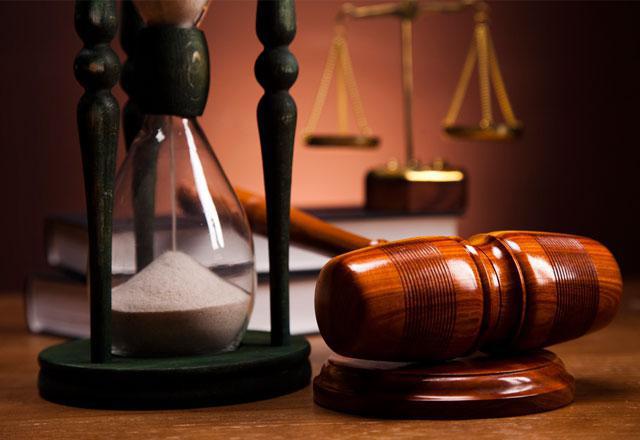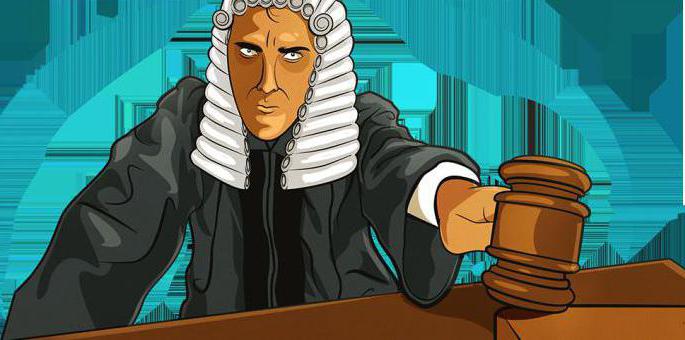The court or its unit, which in the established manner carries out the consideration of cases, is the court. Each of these structures has certain powers, according to which their hierarchy and subordination can be determined.
The concept of the court
Courts of law are courts that have a specific role to play in the general judicial system of a state. Within their jurisdiction, they can consider claims or determine the degree of legality of decisions made by lower courts. It is worth noting that the Constitutional Court is the highest court, and therefore its decisions are final and cannot be appealed or reviewed.
It is necessary to clearly separate the concepts of judicial links and authorities. The former are a system of relevant institutions that are on an equal footing. The latter have significant differences in authority.

Courts of the Russian Federation
Each state has its own judicial legislation. In relation to the Russian Federation, we can talk about the existence of the following authorities:
- first court (or court of first instance) - carries out an initial review of cases and makes decisions on them;
- the second court - it reviews appeals of the decisions of the first in the period before they have yet entered into force;
- cassation - determines the legality and legitimacy of decisions made by the first and second instances that have already entered into force (does not apply to the essential component of the case and does not consider evidence);
- supervisory - has the right to verify the legality of decisions of the cassation service that have entered into force;
- court on newly discovered circumstances previously considered cases.

First instance
The trial court is granted the right to examine claims on the merits. Their powers include the study of evidence, the identification of perpetrators and penalties, the full or partial satisfaction of claims (or complete denial).
AT litigation both parties to the conflict are participating. If it comes to civil proceedings, then this is the plaintiff and defendant. In the case of criminal offenses, these are parties to the defense and the prosecution. The procedure for considering a case in court is quite complicated. For a start, preparations are underway, and after - an investigation in accordance with the available information and evidence. The next stage can be considered a judicial debate, during which each side brings arguments in its favor. The final step is to adjudicate the case.
First instance courts hear cases for the first time. Nevertheless, the legislation provides for some cases and situations when cases are returned for reconsideration without being transferred to higher services. A decision made by the first court may be appealed against by either party to the process.

Tasks of the first court
The courts of the first order in their activities carry out the following tasks:
- protection of the rights and freedoms of citizens defined by legislative acts;
- administration of justice in the established manner;
- conducting a trial and making a final decision on an objective, independent and impartial basis;
- imposition of fair punishments for offenses in order to prevent the commission of such unlawful acts in the future;
- the formation in society of an atmosphere of respect for legislative norms.
Second instance
The second instance courts are also called appellate courts. Their powers include verifying the legality of decisions and sentences handed down by lower services. Within the time period established by law, while the court decision has not yet entered into force, any of the parties to the claim may appeal if the verdict is unsatisfactory or unlawful, in their opinion.
A feature of the courts of appeal is that they actually re-investigate and examine evidence. Based on the results of the meeting, the previous decision may turn out to be unchanged, may be adjusted, or may even be reversed. Until the decision of the second court of law comes into force, the parties to the conflict may file a new appeal.
The verdict of the first instance can be canceled in the presence of a number of conditions:
- inconsistency of the conclusions and arguments specified in the sentence with the circumstances of the case identified during the re-examination;
- contradiction to the law or violation of the judicial procedure;
- incorrect or distorted interpretation of articles of regulatory legal acts;
- mismatch of the degree of punishment of the gravity of the crime.
It is worth noting that not only the defendant (defense), but also the plaintiff (prosecution) can appeal.

Appeal function
In the course of its activities, appellate courts have three main functions:
- the first is to verify the legality and legality of the decisions taken;
- the second function is the coordination and control of the work of the first instance;
- protection of the rights and freedoms of all parties to legal proceedings.
Cassation instance
The terms of reference of the cassation courts include the consideration of complaints regarding cases for which a decision has already entered into force. The legality of sentences of not only the first but also of the appeal category may be determined. Based on the results of the consideration of the case, the following decisions can be made:
- cancellation of the sentence due to its illegality or non-compliance with the norms of the law (here we can talk about the complete termination of the case, an additional investigation or its re-conduct);
- the adoption of a fundamentally new sentence or decision in the case (in connection with newly discovered circumstances or retraining);
- partial changes to the court ruling;
- The decision of the lower court may be left unchanged.

Supervisory authority
The powers of the judicial supervisory authority should include conducting, in the manner prescribed by law, the verification of the legality and consistency of decisions taken by various bodies and already in force. Supervisory proceedings are characterized by some features:
- decisions that have already entered into legal force are considered;
- besides decisions courts of first instance, sentences of appeal and cassation, as well as subordinate supervisory services may also be reviewed;
- Unlike cassation instances, where the court is obliged to consider the application, in supervisory institutions the decision to start the audit remains at the discretion of the judge;
- court supervisory authority in making its decisions it is guided solely by the data of its own verification, and not by any evidence presented by the plaintiff;
- application is not limited in time;
- review of the results of the proceedings is possible only in exceptional cases by the Supreme Court;
- These judicial institutions are also authorized to consider cases opened in connection with newly established circumstances.
Supervisory authorities may act as courts of arbitration or relate to the system of courts of general jurisdiction.
Acts of the courts
All decisions made by one or another court are fixed in the relevant acts. The following varieties can be distinguished:
- The court decision provides for the establishment of relations between the parties to the processes regarding substantive law. It reflects not only the legal component of the issue, but also the coercion of all participants to comply with the norms. A court decision is made objectively, impartially, solely on the basis of legal norms in force in the state, and not in terms of morality or justice.
- A court ruling is issued on issues that do not directly relate to the merits of the case, but, nevertheless, require a separate study, investigation and production. This act can be drawn up both orally and in writing, but they are completely equal and binding. An important point is that the court ruling can be appealed separately and independently of the court decision.

findings
The judicial system is a definite structure based on the courts. Each of them has certain powers. So, speaking of the first, it is worth noting that she is engaged in the initial consideration of a particular case. These institutions are responsible for examining the evidence on the basis of which a decision is made. It can be appealed to the appeal or cassation.
The latter are the second in the judicial hierarchy. The first deals with appeals against decisions that have not yet entered into force. In fact, a new trial and judicial investigation is underway. The cassation instances deal with cases whose decisions have already entered into force. These bodies do not relate to the essence of the matter, but only study the act passed in terms of lawfulness and compliance with the law.
Supervisory authorities are authorized to verify the activities of any lower judicial authorities. Their peculiarity lies in the fact that they conduct their own audit of the activities of judges, without touching upon the essence of the matter. Filing an application is not yet the basis for the proceedings. The judge independently determines the appropriateness of the investigation.



